Charting LaLiga #2: Ascendant Altimira, Barça's revival, Real Madrid remain unscathed (& more)
With matchday two in the books, we're back with another drop of insights from around the Spanish top-flight.
A new addition to our coverage this season, Charting LaLiga will be a fixture after every matchday.
The premise is simple. Every week, we’ll churn out some points of interest from around the league in a (hopefully) digestible, easy-to-read manner. And of course, there will be a data element behind much of it.
Charting LaLiga will be a space for all types of insights, no matter the breadth of the topic or which team or player is under the spotlight. Sometimes they’ll be on the big themes everyone is aware of; other times they’ll be minuscule details that wouldn’t warrant an article of their own (but have a small place here).
All posts will typically be made up of anywhere between 3-6 sections, and you can expect these to land by Tuesday (following the usual Monday night fixture).
Any feedback, do let us know on here or X!
⚠️ Here comes Sergi Altimira
Remember back in 2023 when Ramón Planes signed Sergi Altimira for Getafe, left that position to take up the same one with Real Betis, and then signed Altimira again for his new club in the same summer? Maybe not, but you’ll understand the takeaway.
Ramón Planes was a big fan of the then 21-year-old midfielder.
The ex-Barcelona Sporting Director didn’t stay long at Betis either, but he did leave a handful of interesting recruits before moving again. One of those — Johnny Cardoso — has already been spun for a roughly 20 million euro profit, and in his place it’ll now be over to Altimira to help pick up some of that midfield slack.
The good part about that is that Altimira can already do much of what Cardoso did. Maybe not to the level of the American, but not a long way behind either.
Like Cardoso, the 23-year-old is an excellent recuperador. Reading the development of play to be able to intercept, being rangey enough to cover ground and pick up loose balls, and with an improving physicality at the top level, Altimira looks primed to become one of the better midfielders in LaLiga on that front.
He’s already good — and already grown a lot. Playing at a high rhythm and going box-to-box for 90 minutes is coming easier to him too.
In the opening weeks, we’ve seen the importance of that on the defensive side, but also in how he can weaponise it for Betis in an attacking sense. Against Alavés, Altimira’s interventions to cut attacks short were frequently followed up by smart passes to tee up transitions going the other way. There was a maturity to his defensive contribution, followed up by intelligent decisions, that wasn’t quite there 12 months ago.
And in a team with searing speed and ball carriers in Rodrigo Riquelme, Ez Abde, Aitor Ruibal, and potentially Antony — as well as mobile no. 9s — that’s a big thing.
Betis don’t need him to become a midfield general who runs the game in possession. Johnny Cardoso never was and look where he ended up. But if Altimira can sustain this level of performance as a midfield anchor, capable of providing balance and sprinkling enough smart use of the ball, that fee Ramón Planes paid for him back in 2023 will start to look very modest.
JK
🛡️ Real Madrid keep Courtois quiet while they search for fluidity
The beginning of the Xabi Alonso project hasn’t exactly been spellbinding. But should we have demanded it to be? When the team’s biggest problem throughout last season was a lack of collective balance, the answer is probably no.
What they have been so far is dependable.
Through the opening two matchdays, Real Madrid are the only side in LaLiga who haven’t conceded an Opta-defined big chance. Indeed, they rank first among all teams for xG conceded (0.87) and shots on target faced (3), while they have only suffered one shot from an opposition fast break through two matches.
What they achieved against both Osasuna and Real Oviedo was largely what they needed to: defend by avoiding the issue, whilst they go about wearing down the opposition into either lapses of concentration or defensive breakdowns that would eventually tell.
It was again clear to see Real Madrid’s insistence on being connected, keeping short distances between players, and moving the ball with an eye on being in good position to recover it quickly after turnovers. Through the two matches, they’ve recovered the ball in open play an average of 49 metres from their own goal; the highest in the league, as well as considerably higher than their average last term (41.7).
“When we’re able to get those distances where we’re much closer to each other, when both we have the ball and when we lose it…” Alonso mentioned post-game, before drifting into another line of thought that didn’t really finish the sentence.
We know what you meant, Xabi.
At least to begin, Real Madrid have played with a renewed collective emphasis. The proximity of players promotes sharing of the ball and quicker circulation, while they’re frequently crowding their opponent out after turnovers — both through numbers around the ball and the fact that they’re fresh to jump into high-intensity short efforts of recovery.
Long, scrambling runs back towards their own goal have been scarce.
The next step is, of course, how to further sharpen their attacking game without losing that platform. Their four goals so far have been scored from moves containing two or fewer passes (including a penalty), which aren’t exactly tied in to the territorial dominance we’ve previously mentioned. Half of them came late on versus an Oviedo side taking more risks and leaving themselves exposed to quicker attacks.
Perhaps it’ll come simply through improving sensaciones or more playing time for specific players in the new system. Or if Kylian Mbappé continues to be this good, then it might make sense to keep the emphasis firmly on conceding so little in terms of territory and work for Thibaut Courtois.
Either way, it’s perfectly logical for Alonso and Real Madrid to begin on this path. Their passage through the first two weeks has been largely without problem, and affords the new man time to start building out from a safer space, with no early drama.
Whether Real Madrid soon become an attacking juggernaut who you simultaneously can’t lay a glove on, or the Madridistas decide they simply don’t like control all that much and re-open a philosophical debate, only time will tell.
JK
🧠 Jon Gorrotxategi puts his own spin on sub cameos
It didn’t take long for Jon Gorrotxategi to make the Reale Arena oooh and aaah.
Readers of La Pausa will know we’ve been driving the campaign for him to replace Martín Zubimendi for quite some time now. So to see him finally on the pitch in LaLiga, and playing as well as he did, pleased us greatly. He made the third most passes in the game (22) after coming on, along with five possession recoveries and three tackles/interceptions.
Even if it was just a mere glimpse and not at all determining in whether he is the heir apparent to Martín Zubimendi (there’s work to be done yet), here’s a brief look at his second half cameo and how his intelligence helped La Real begin to show a different version of themselves.
The clip below feels like a good starting point, as well as an encapsulation of what we can expect from him with the ball:
Let’s take a look what happened there.
Real Sociedad recover the ball deep and the crowd roars to attack an out-of-shape Espanyol quickly — i.e release the ball forward. Remember, they’d just scored to make it 2-1. Adrenaline was up. An early ball into space for Kubo wouldn’t be the worst idea in the world, and Espanyol had been hard to play through when they could get into their deeper defensive shape with men behind the ball.
However, he looks up and turns back. Some of the crowd like it; others don’t. Gorrotxategi’s decision avoids the risk of losing possession with a riskier pass, and sets them back up around the halfway line in their shape.
Then, initially feigning interest in getting the ball back, he soon sneaks into a small window over on the right side, making himself available and kickstarting a new attack. After a give-and-go with Kubo on the move, La Real quickly recapture their dynamism, swing the ball across to Marín, and find themselves one pass away from a big chance.
Et voilà.
Indeed, this is largely the argument for Gorrotxategi. Even if we hadn’t seen him in LaLiga before the weekend, we know that his game is about measuring tempo, knowing when to slow down and speed up, and then showing real quality in getting attacks out of the starting blocks when he does decide to go. He is crafty in finding space to spark something — and agile enough to escape pressure when the heat arrives.
“The feeling is that he gave us a bit more order, and that he’s going to be a very important player for us,” said Sergio Francisco post-game, before adding he was convinced of the latter.
In a team we want to be less readable and easier to prepare for this term, Gorrotxategi can go a long way to helping that.
JK
💡 Flick flips the switch
It would be hard to find two sides with more contrasting approaches than Levante and Barcelona on Saturday night. Julián Calero’s men sat in a compact 5-4-1, frustrating, taking away all the valuable space and leaving their opponents with the deeper stuff they didn’t want. And along with that, they were ready to sprung into fast attacks at every opportunity.
It was nothing Barcelona hadn’t seen before, but it did give Hansi Flick a serious headache in its execution.
Levante were caught offside six times (and probably another half dozen times where advantage was played), but that was to be expected. It was an inevitable part of counter-attacking where they often only had a couple of seconds to make a decision, with Barça’s backline rapidly squeezing towards them. If you could play offside in the opposition’s half, Flick might push it even further…
After an arduous first half, Barcelona broke through early in the second with a pair of quick goals, which would eventually put them in position to grab a late winner. After the match, Ferran Torres admitted: “[Flick] gave us some tactical points because we weren’t very well positioned in the first half.”
The main issue before the break was Raphinha, tasked with playing Dani Olmo’s role, was too often dropping deep towards the ball instead of stretching Levante’s back five. The only moments when Lamine Yamal could receive in space came when Eric García managed to attack on the inside of Manu Sánchez, creating gaps for Barcelona to exploit.
On the left, Casadó was the only player trying to do that job, but as someone who rarely arrives in the box, his movements often left Marcus Rashford with little option but to recycle the ball against a disciplined block. He really wanted to drop his shoulder and take someone on but with the extra defender ready to double-team him, it was futile.
The second half brought adjustments. Raphinha shifted left, drifting into more central pockets and into the left half-space while Balde held width. On the right, Olmo — an instinctive space interpreter — took up the role between the lines.
“In the first half, Rashford showed us how good he is,” Flick later said, even though the forward was hooked at the break. Rashford did threaten, reaching the byline a couple of times, but Barcelona were too static on his flank.
After half time, their play carried more variety and intent, finally stretching Levante’s deep block and moving them around in ways they hadn’t managed earlier.
RD
🦁 Boyomo is ready for the big time
It’s only been two games, but Alessio Lisci’s fingerprints are already all over this Osasuna side — on both the collective and the individuals within it. They opened the season with a narrow defeat to Real Madrid at the Bernabéu, before bouncing back with a convincing but slender victory over Valencia on Matchday 2.
Much of that is down to smart recruitment from sporting director Braulio Vázquez, who has quietly assembled players tailored to Lisci’s style. Valentin Rosier, signed on a free, immediately showcased his value: he shut down Vinícius Jr. at the Bernabéu and then proved himself a genuine two-way threat against Valencia in and out of possession, with an assist for Ante Budimir and constantly putting pressure on Valencia’s left-hand side.
Another new face, Víctor Muñoz, arrived from Real Madrid and has injected real verticality into Osasuna’s attack. He came off the bench against Madrid but earned a start in the following game. What he lacks in finesse, he more than compensates for with sheer pace and directness, giving them much of what they had in spurts from Bryan Zaragoza last term.
Perhaps the standout player, however, has been someone who was already at the club. Enzo Boyomo is a defender we admired back in his Albacete days, and he’s been immense across Osasuna’s opening 180 minutes. The 23-year-old, now starting as the right centre-back in Lisci’s back five, is attracting interest from clubs such as Juventus and keeping him beyond the transfer window will be no small task.
In Lisci’s system, a lot is asked of him in covering for Rosier on the right side, with centre backs being competent in the channels a big demand from the Italian. Osasuna’s new boss puts a massive premium on one-to-one match-ups all across the field, meaning wide centre backs like Boyomo often have to step out and hang with wingers and attacking midfielders without much of a safety net.
Boyomo, however, is proving he can more than hold his own covering at full-back.
Side note: Osasuna won 60 percent of their duels against Valencia at the weekend; their highest success rate in a LaLiga home match since October 2021 (also 60% v Granada). Welcome to Lisci Land.
Indeed, the Cameroonian’s recovery speed and physicality allow Osasuna to take more risks both in and out of possession. Normally, the weakness of a 5-3-2 is the lack of natural cover on the wings, but Boyomo is a reliable player to be able to help neutralise that: he steps out aggressively to shut down space in front, yet has the pace to recover and cut out balls in behind — as shown in the image below.
He might not be around for much longer at Osasuna if a bigger European side come calling, but he has been a pleasure to watch in the first two games of Lisci’s reign at least.
His presence — or lack of, depending on how things develop — would certainly mark a different ceiling for the new project.
RD
Anything else you liked or thought was worth mentioning on MD1? We, of course, can’t hit on everything and inevitably leave some bits on the table… let us know on here or X!



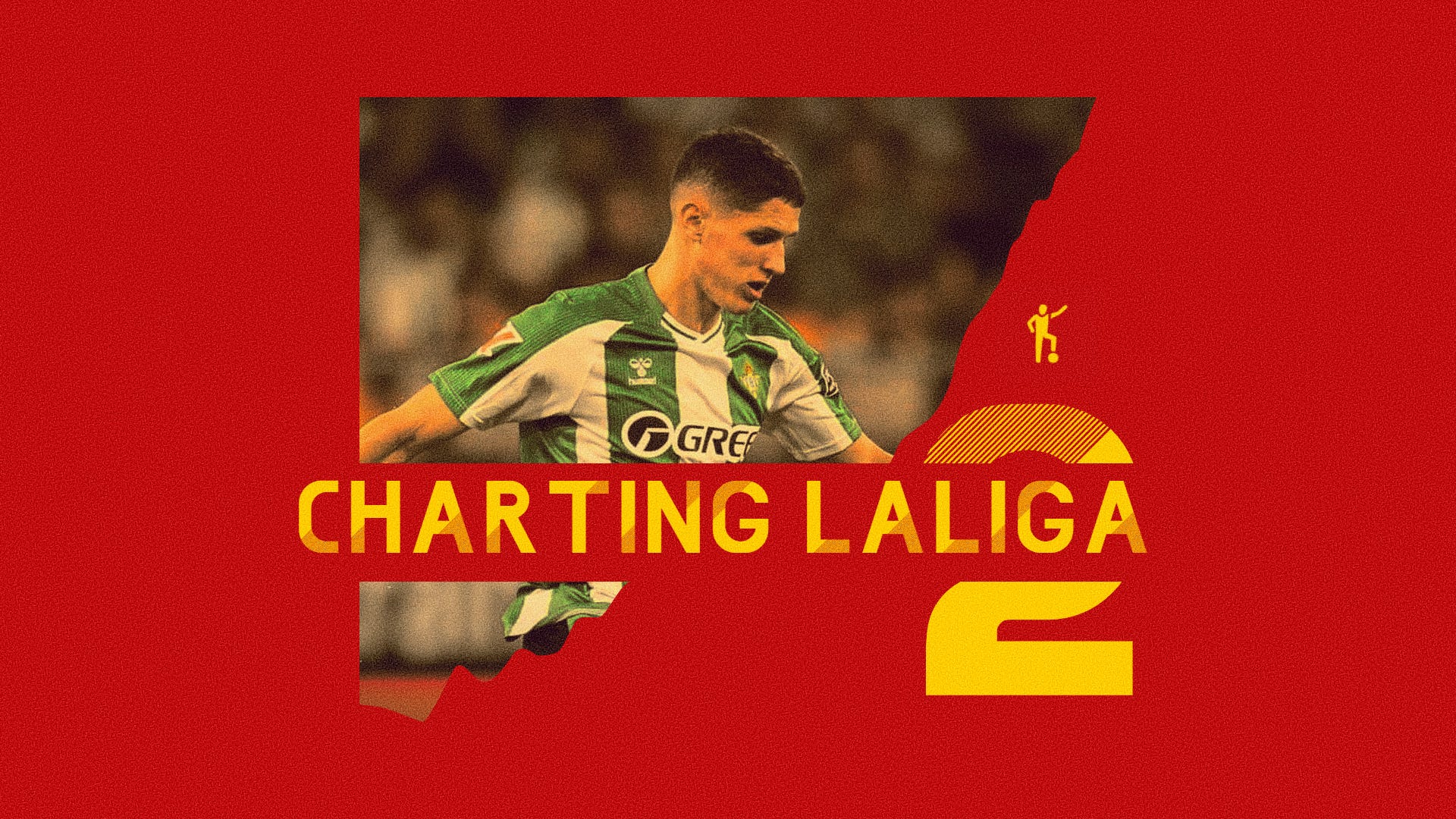
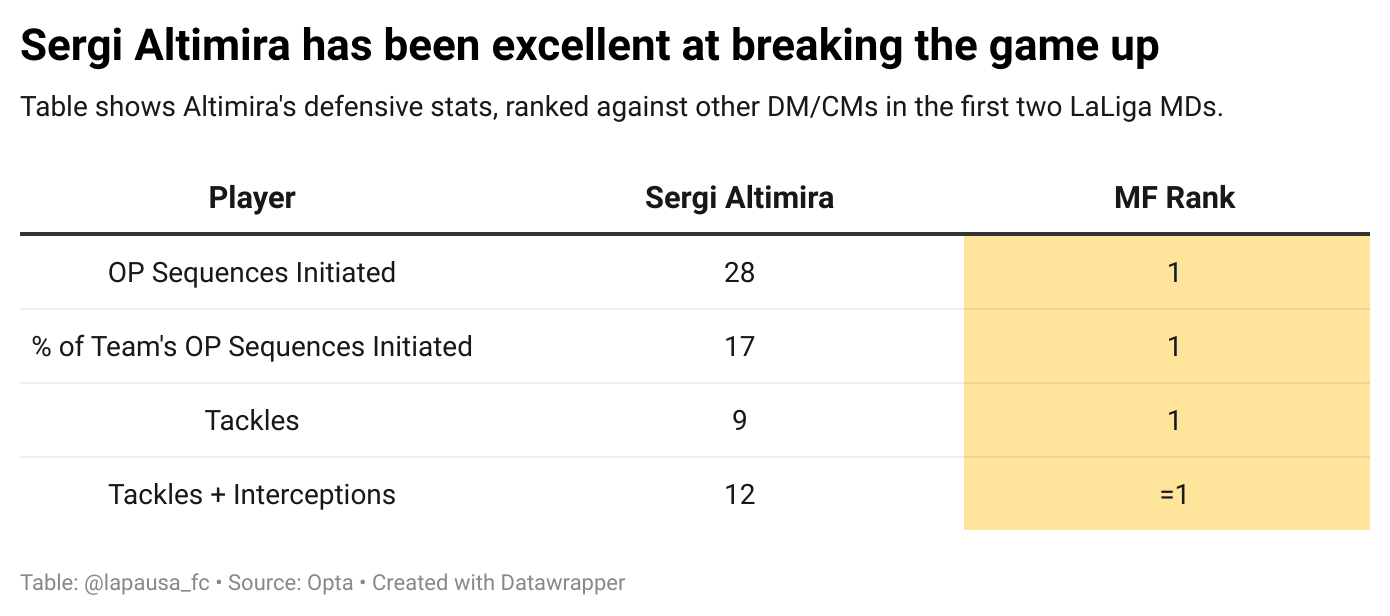
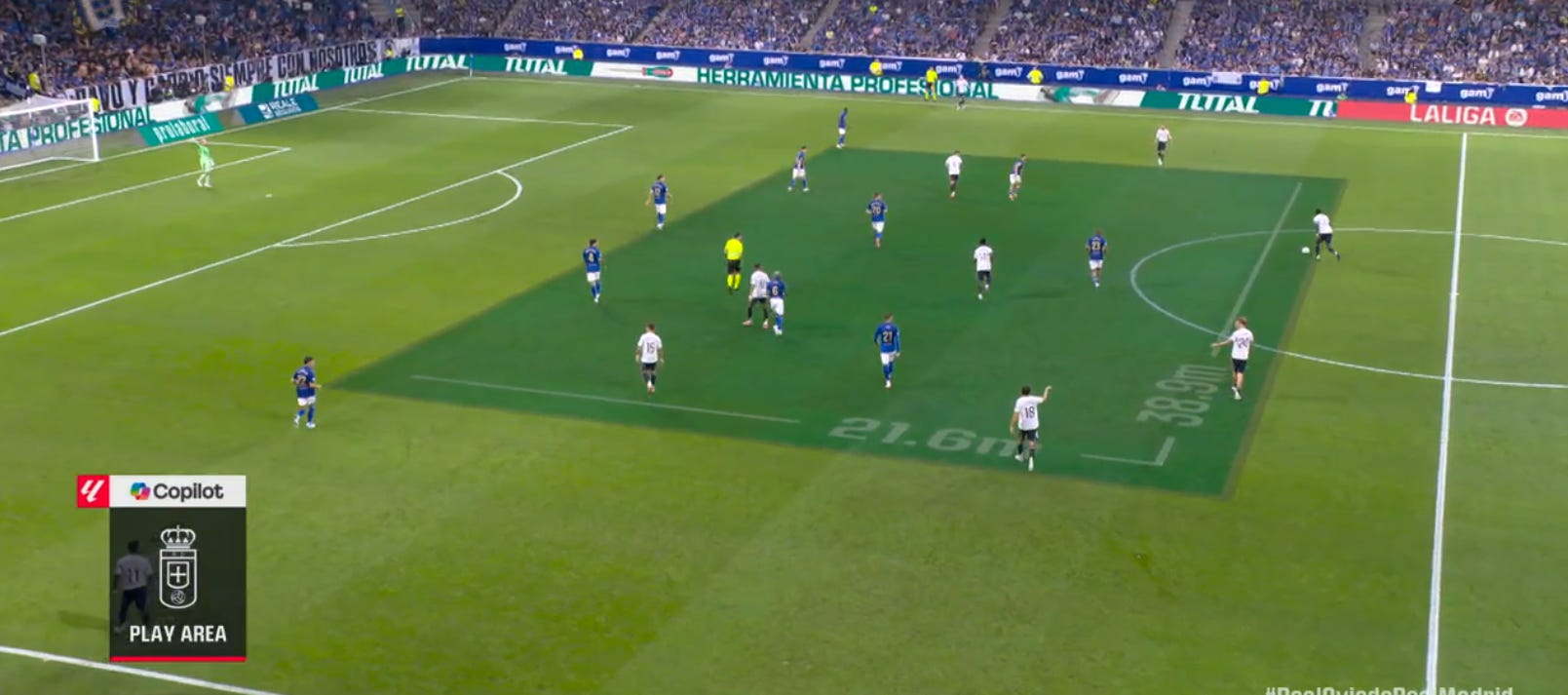
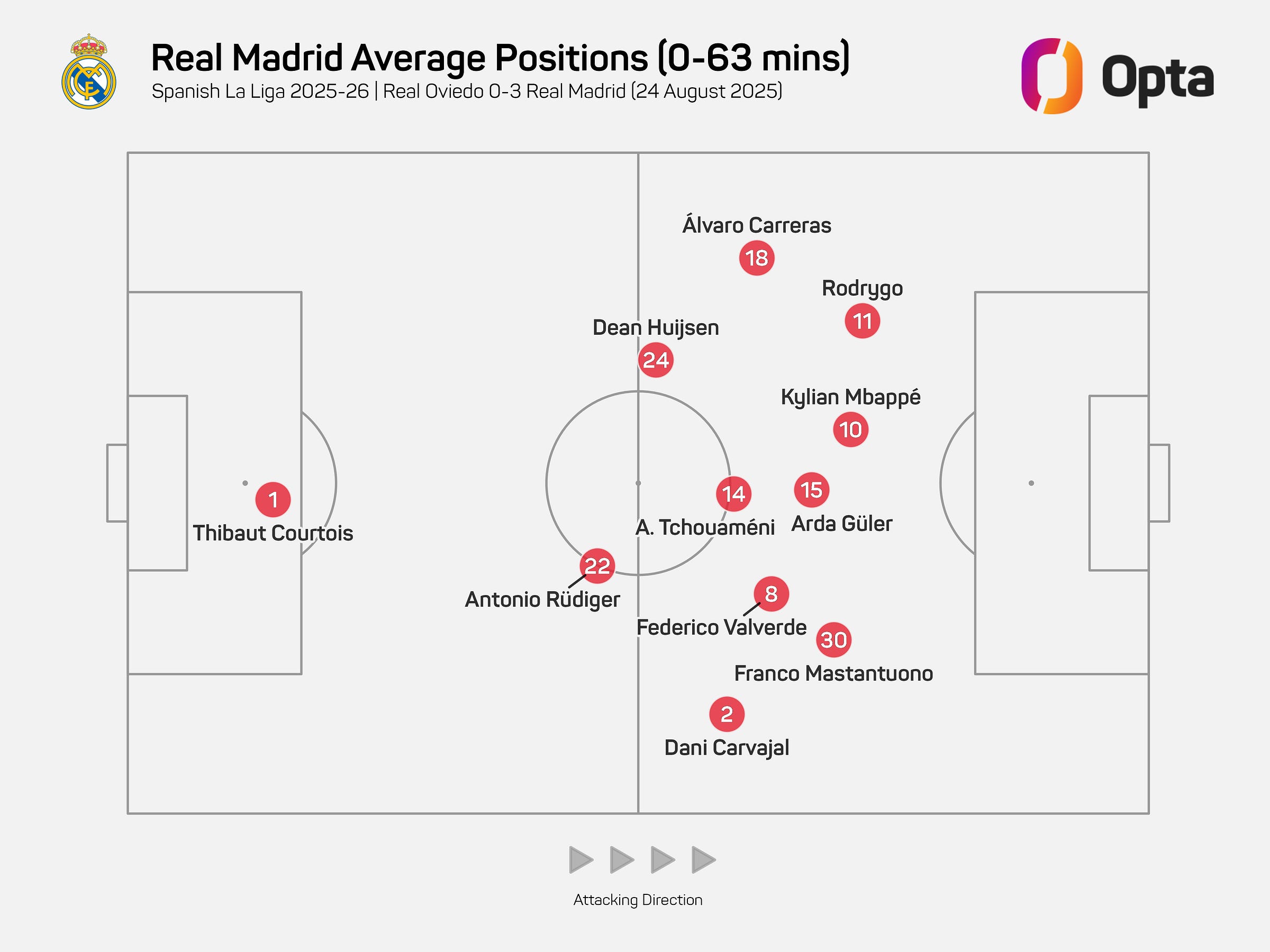
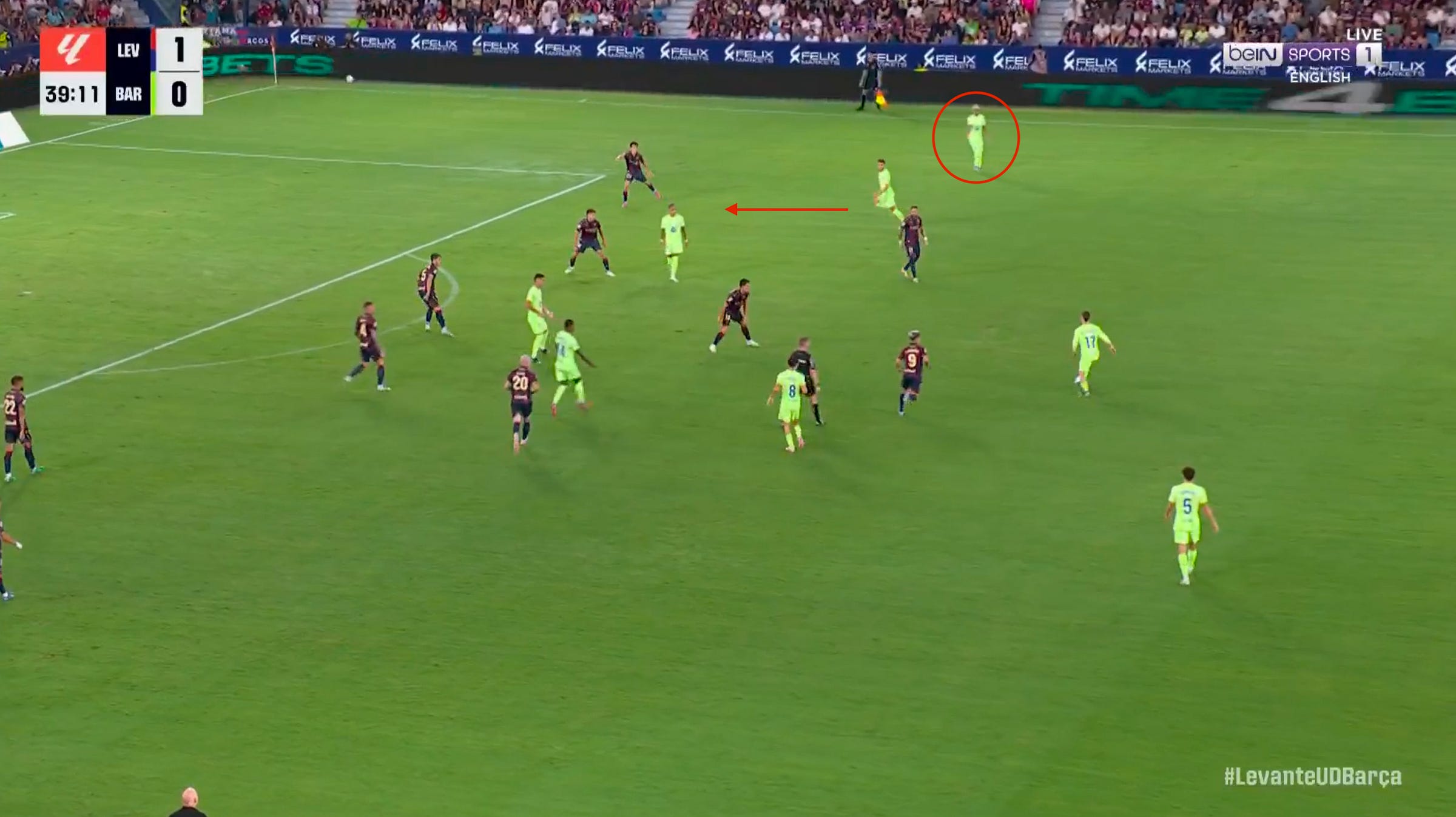
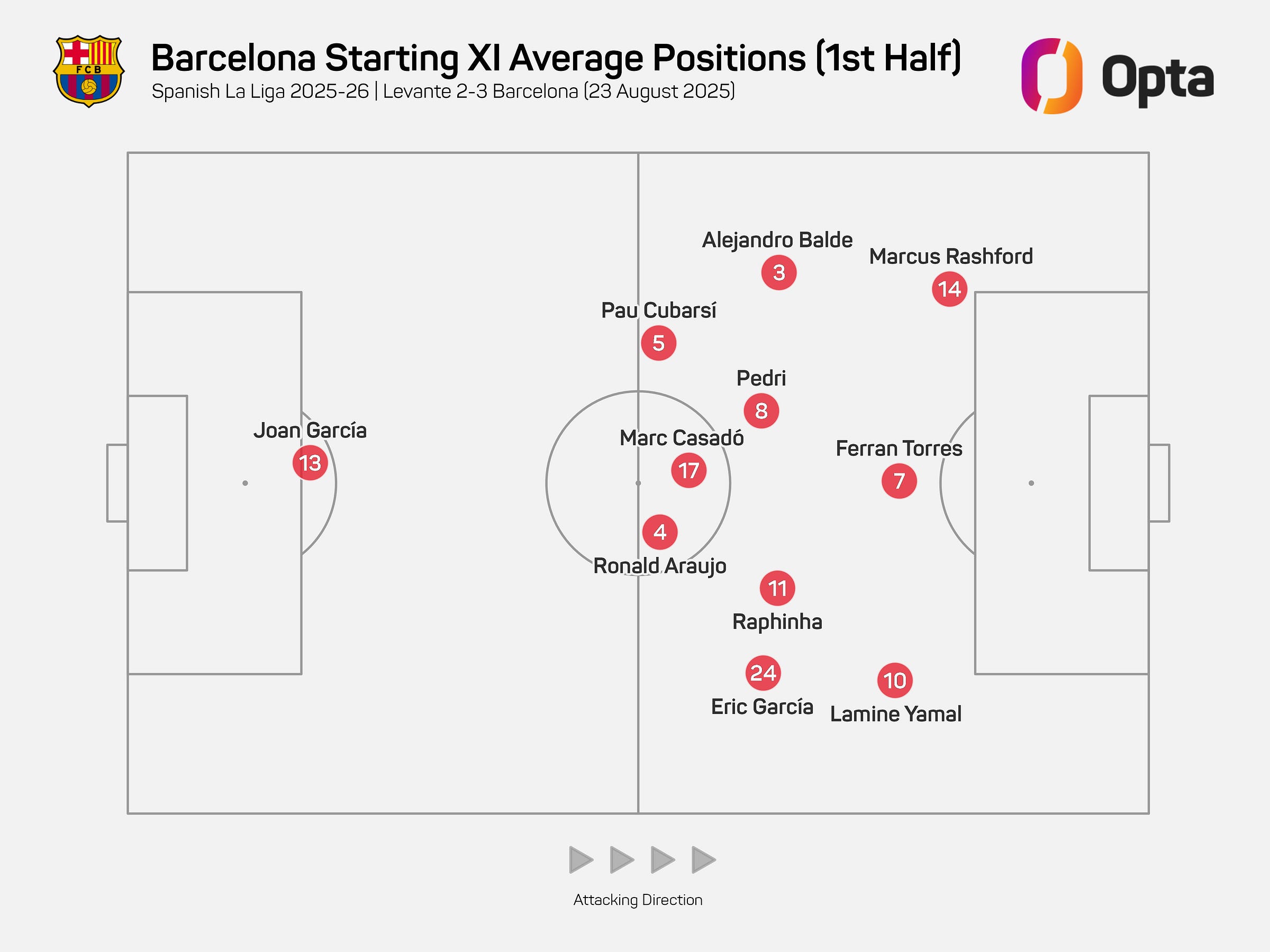
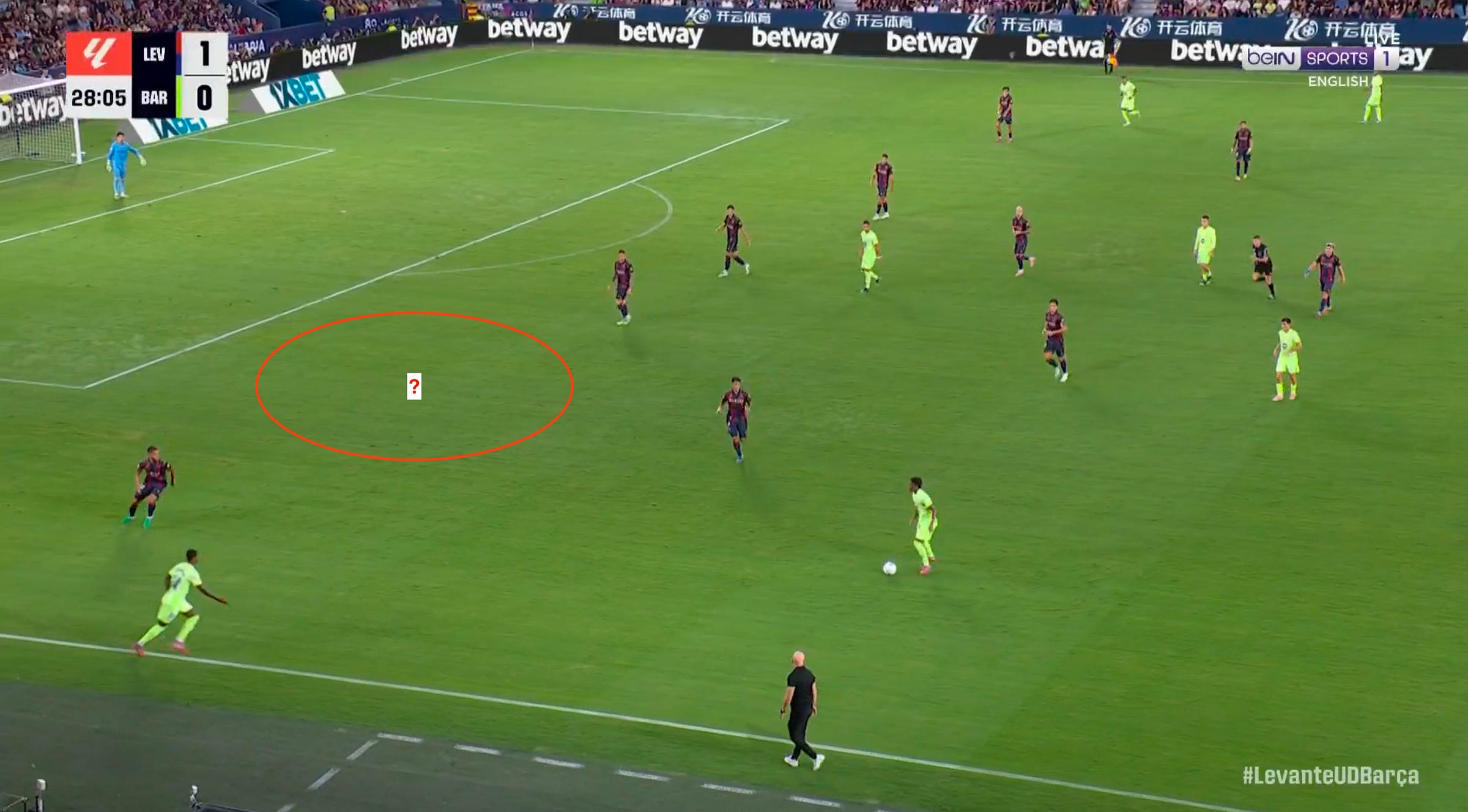
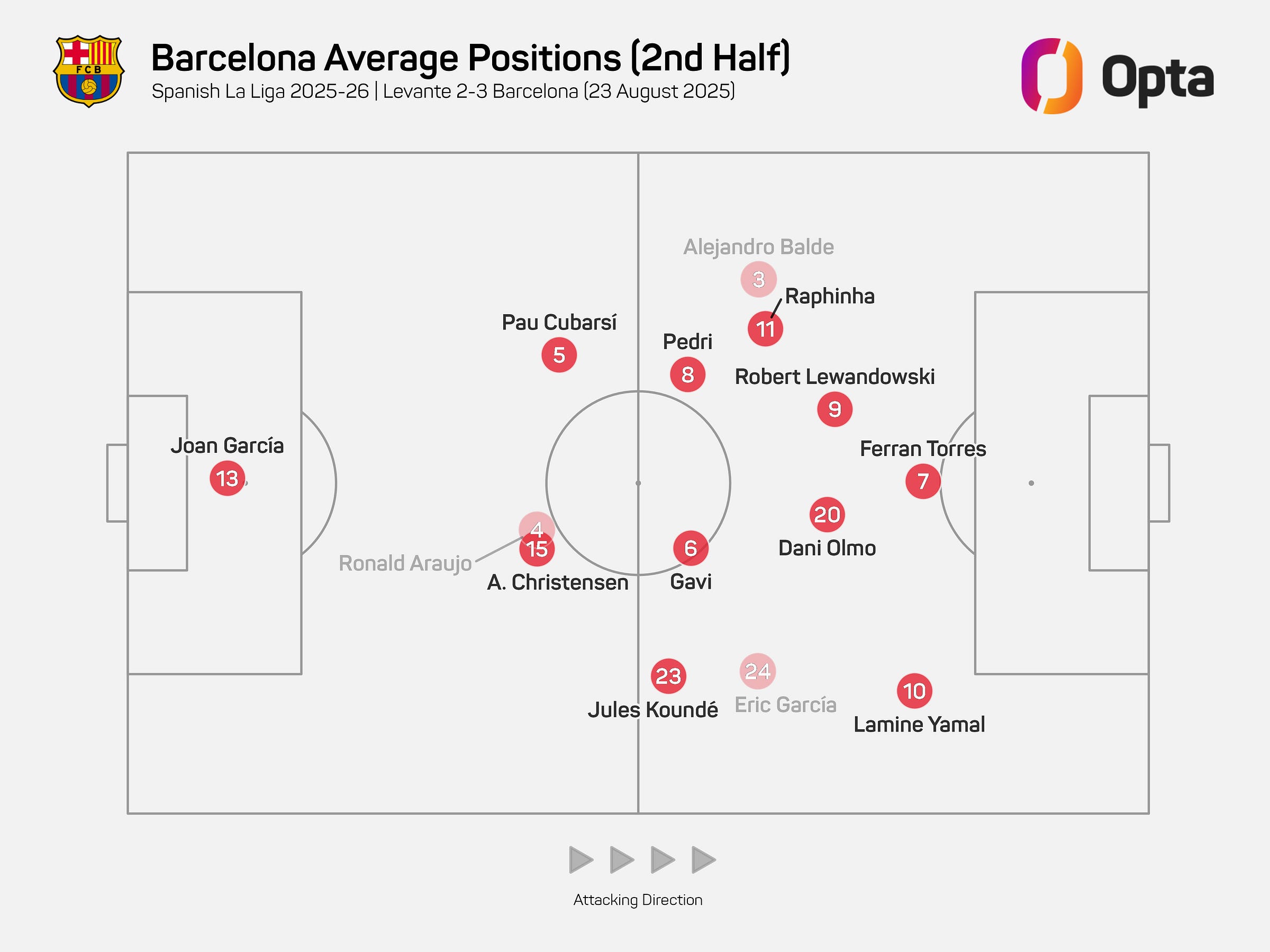
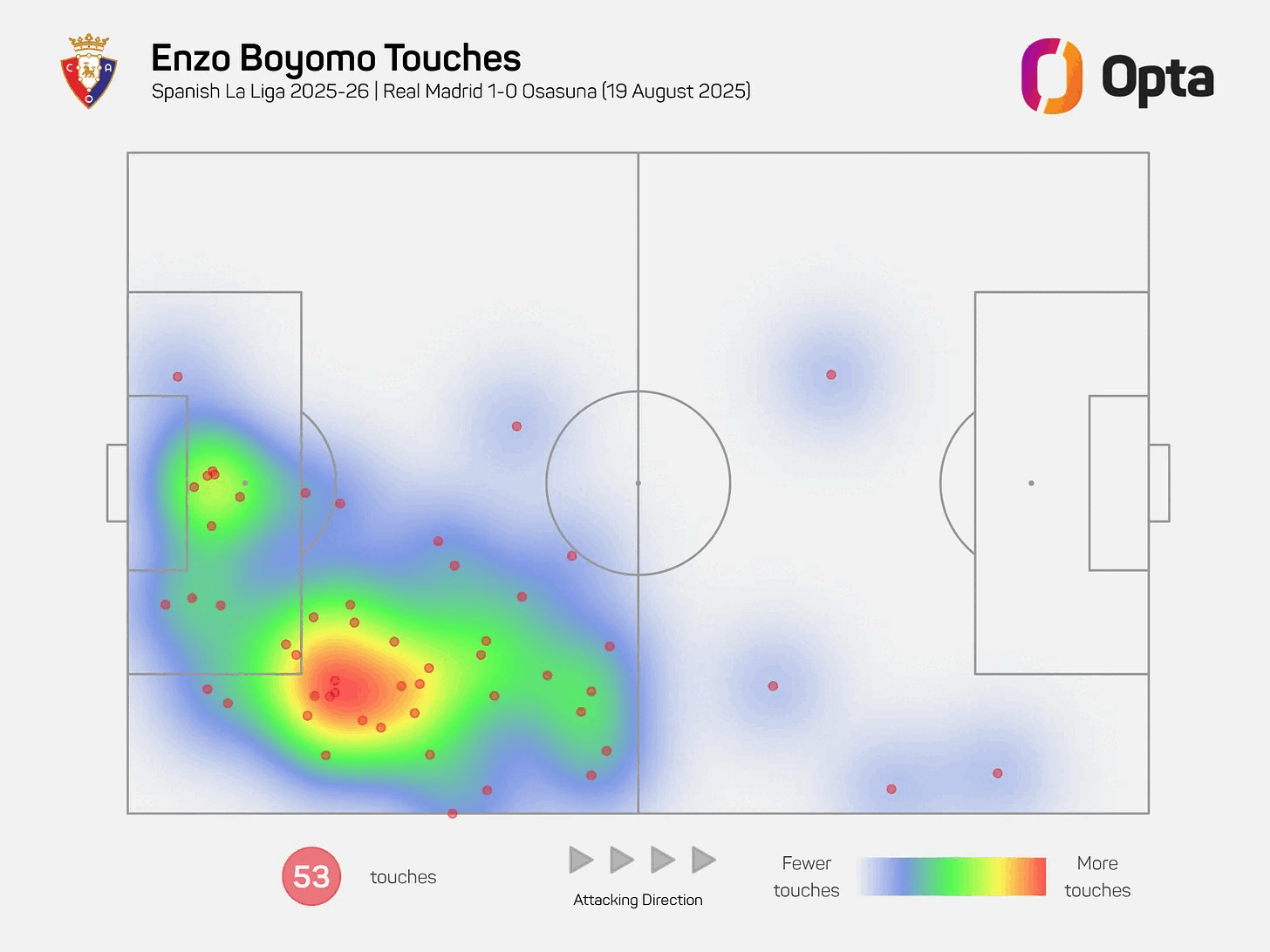
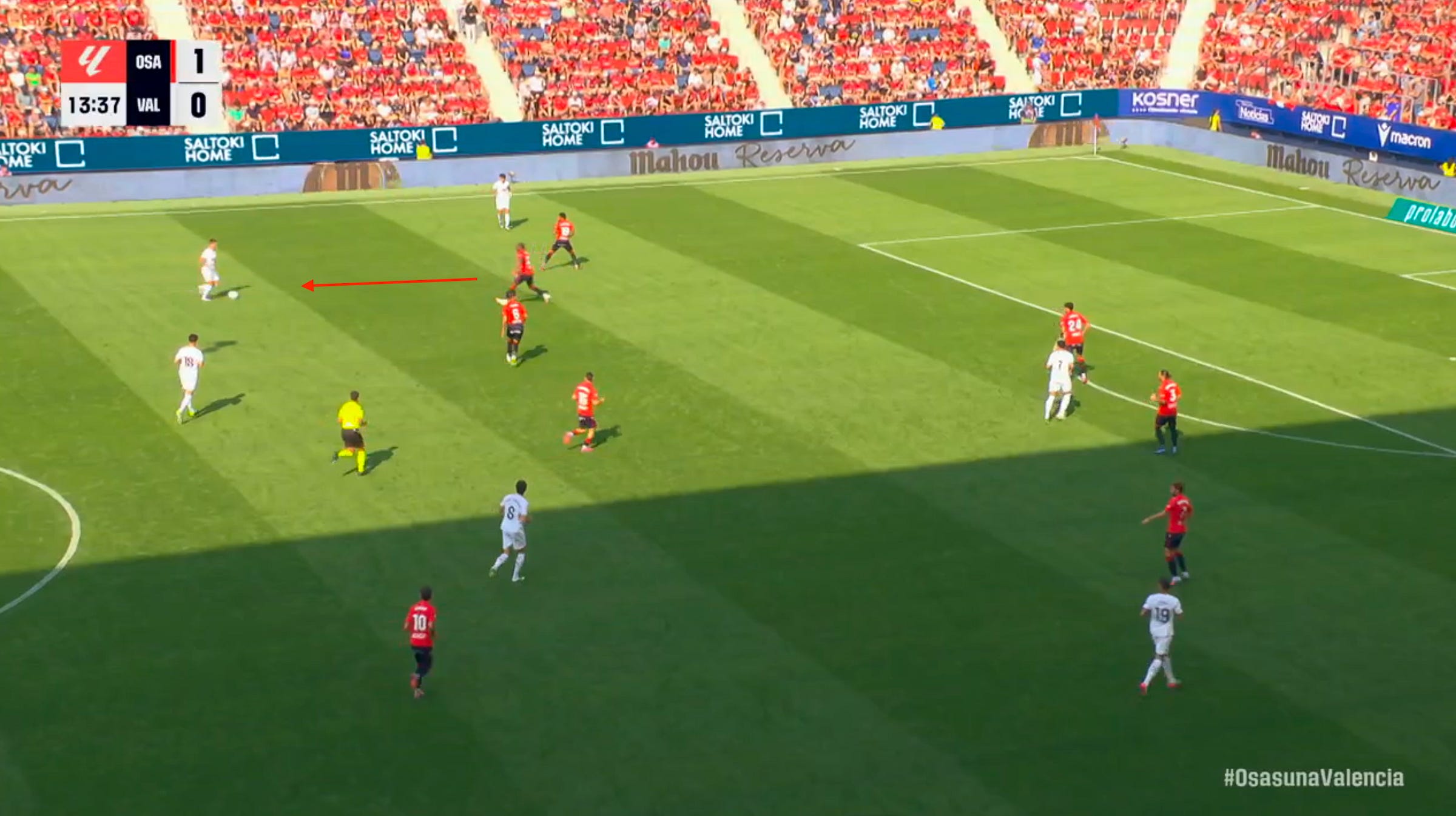
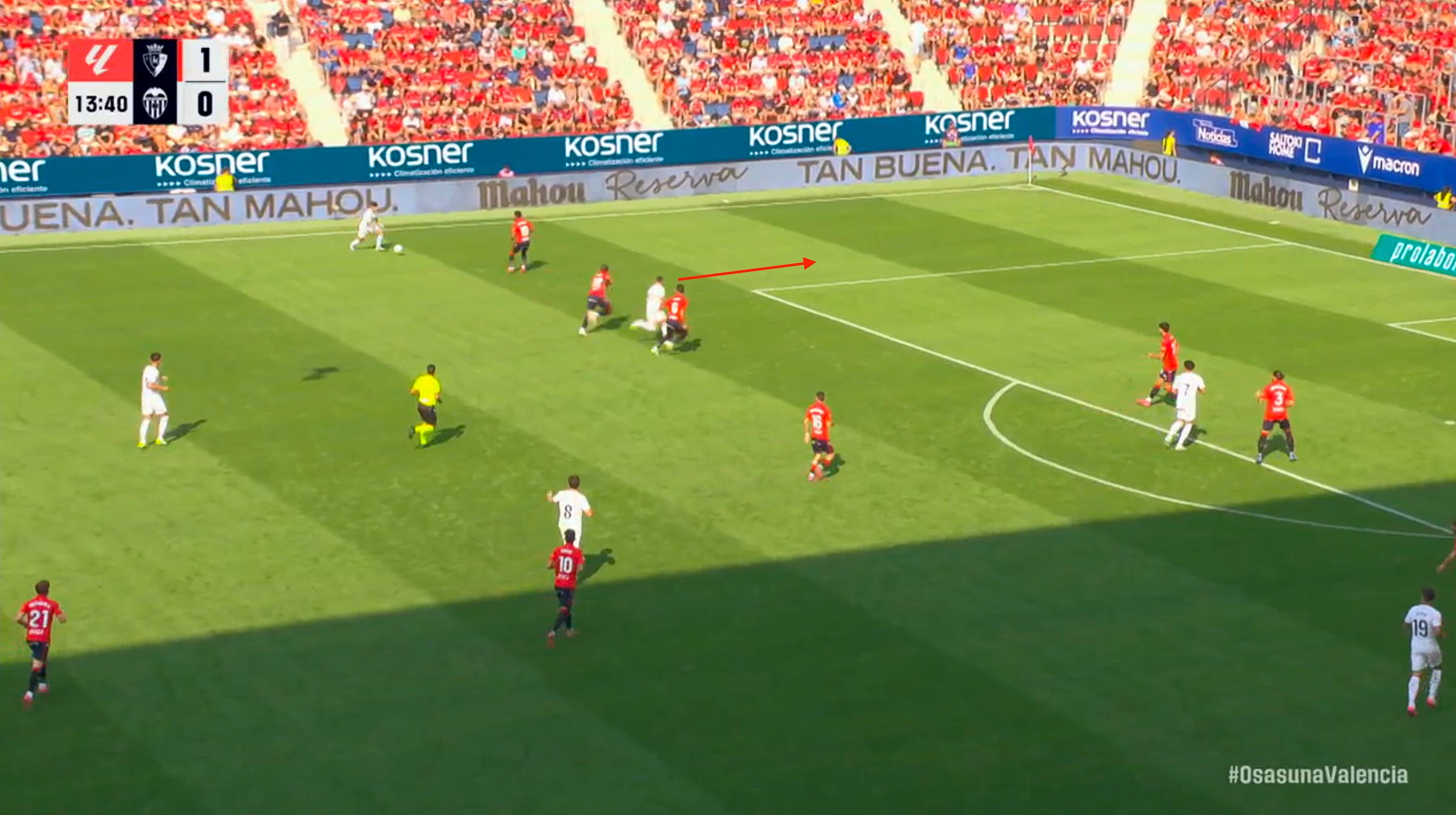
Spot on as usual.
I have gone through your publications hoping to find insights into Jagoba Arrasate's Mallorca, but i didn't find any.